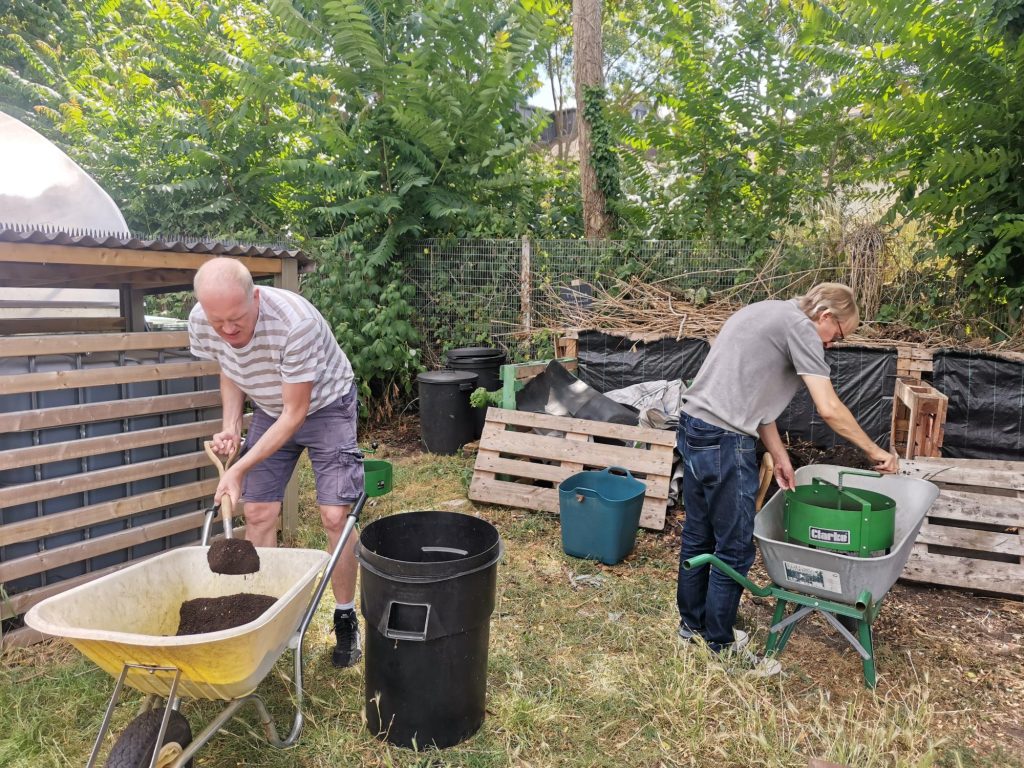Barnes Common frequently receives enquires from people who want to make their gardens more sustainable, and here, we respond to some of these queries. If you have a question you would like us to feature – whether related to food growing or sustainable gardening in general – please contact Nicky. If you have tried these ideas at home, let us know how it goes!
While we describe the methods we use at the growing project as regenerative, in practice, we draw on a lot of different approaches. One such approach is permaculture, which has gained more prominence in recent years. Often, people have heard of permaculture, but are unsure exactly how it’s defined. This month we tackle the question, “what is permaculture, and how can I apply it in my own garden?”.
Perhaps some of the confusion around the term stems from the fact that there is no one definition. In fact, Rosemary Morrow, who has over 40 years experience teaching and practicing permaculture, has commented, “I find it very difficult… to define permaculture because it covers all of human living”. The term was originally coined in the 1970s, by two Australians called Bill Mollison and David Holmgren, who were concerned about the environmental impact of industrial agriculture. They drew on knowledge from indigenous cultures around the world, as well as the science of ecology and landscape design, to formulate an approach not only to gardening and growing food, but to creating more sustainable systems of living.
Permaculture, then, is an approach to land management and settlement design. It is a ‘whole systems’ approach, in which no one element of the system is considered in isolation. The Permaculture Association has highlighted three key tenants; ethics, lessons from nature and a design approach. Ethics refers to certain values being put at the heart of everything, namely the triad of ‘earth care, people care and fair share’, the latter relating to the need to address inequalities and redistribute surplus. Lessons from nature refers to observing natural systems rather than jumping in and ‘doing’, taking inspiration and learning from nature at all times. A design approach refers to how these principles might eventually be implemented – observing what is going on around us, identifying resources, getting people involved and bringing it all together in a plan of action.
Let’s use the example of the Growing Project to think about what this might mean in practice. Earth care relates to sustainable growing methods, such as no-dig gardening, creating wildlife habitat and conserving water. People care refers to ensuring that all members of the community are able to access the project and feel included. An example of fair share is providing our surplus produce to the foodbank, ensuring it is shared more widely in the community. Companion planting is an example of taking inspiration from nature – observing which plants naturally complement each other. The design approach is constantly used as the project grows and evolves.
The principles of permaculture can be applied in any situation – whether designing a 10 acre homestead or a small windowsill in a flat. There is a vast amount of literature out there looking at how the principles can be applied in practice, but two really useful concepts when starting off are those of ‘sector planning’ and ‘zoning’. Sector planning involves mapping out all of the external energies that are influencing a site – for example, prevailing wind, average rainfall, amount of sunlight and so on. Understanding these energies before starting to work on a site means what you do will be more likely to be successful. Once you understand the context in which you are situated, you can decide whether you need to harness positive impacts from these external influences, and mitigate negative impacts. For example, you might plant a hedge as a wind break, or put your herb garden in a particularly sunny spot.
Zoning refers to the way in which the area is divided up. If you were thinking about a large house with a lot of land, the house would be zone 0, the centre of activity – where people live and work, and requiring a high input of energy. Zone 1 is the immediate surroundings, in where crops or animals that need tending on a daily basis are placed. Zone 2 and 3 follow this, each still needing regular input, but with slightly less intensity. For example, perennial veg could be located in zone 2 and fruit trees in zone 3. Zone 4 is a semi-wild zone requiring minimal care – it could be used for timber, or for grazing animals. Zone 5 is a wild, un-cultivated area, where we can observe and learn from nature. Clearly, not everyone has acres of land to divide up in this way, but zoning can still be useful. If you live in a flat in a city, for example, your flat would be zone 0, zone 1 could be a window box, zones 2 and 3 could be community gardens or community orchards you have access to, zone 4 public parks and zone 5 wild areas such as railway embankments. Thinking about your local area in this way can open up a myriad of possibilities for engaging with nature.
Permaculture is a varied discipline, and there are a huge number of books and online resources you can dive into if you are interested. One final definition we might consider is that permaculture is “a revolution disguised as gardening”.
Previous blogs:
How to Plant a Pollinator-Friendly Garden

